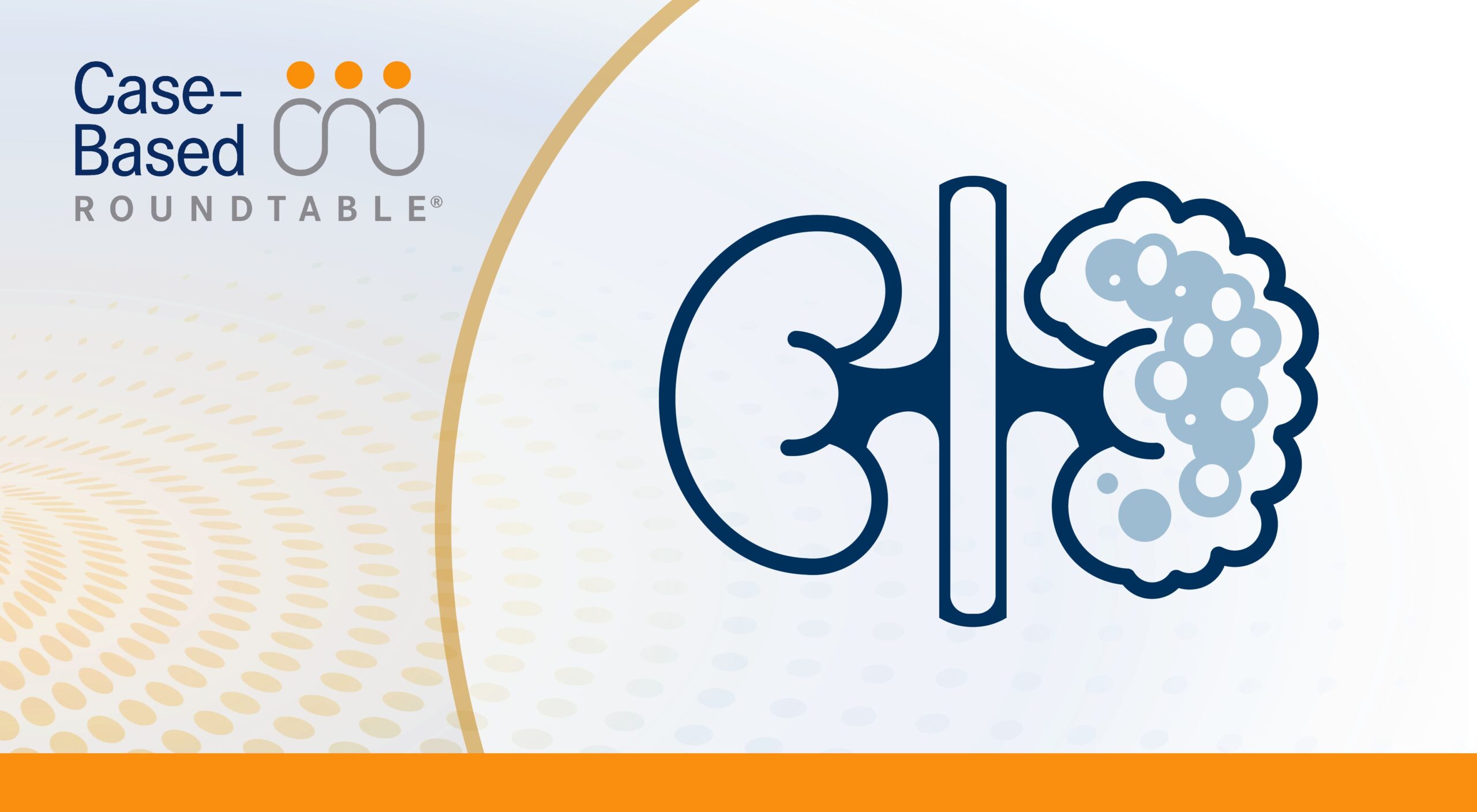Photo-Illustration: by The Cut; Photo: Retailer
Bleu de Chanel is inescapable. Since the original…

Photo-Illustration: by The Cut; Photo: Retailer
Bleu de Chanel is inescapable. Since the original…

Noah Hawley’s new FX series Alien: Earth doesn’t waste time pretending it’s just about xenomorphs. The monsters are there — acid blood, drooling menace, all that good stuff — but the real…

Pharmacists have many pivotal roles during respiratory virus season, including administering vaccines and counseling patients about viral respiratory infections, risk factors, and potential complications. Pharmacists can also utilize their…

Here’s what’s launching from Oct. 20 to Oct. 26: A new secure communications satellite for Spain and four other missions from the U.S. and China.

Immunotherapy (IO) and tyrosine kinase inhibitor (TKI) combination regimens have dramatically changed outcomes for patients with metastatic clear cell renal cell carcinoma (RCC). Now, clinical experience and research are providing better guidance on how to respond when patients’ disease recurs after the use of combination therapy. In a virtual Case-Based Roundtable event for oncologists in Oklahoma and Texas, moderator Nizar M. Tannir, MD, professor of genitourinary medical oncology at The University of Texas MD Anderson Cancer Center in Houston, presented data on second-line treatment and beyond and asked participants to share their experiences. They discussed how many of their patients are able to delay subsequent treatment for several years thanks to frontline combinations and also considered the barriers to use for the newer agents tivozanib (Fotivda) and belzutifan (Welireg).
DISCUSSION QUESTIONS
Nizar M. Tannir, MD: Vis-a-vis the combination arm; we already know that the combination should not be given after a prior therapy with nivolumab/ipilimumab or an IO/TKI. But what do you take out of this monotherapy arm with 9.2 months’ median progression-free survival [PFS] in patients who received 1.34 mg tivozanib as second line?1 Do you consider these results to be clinically meaningful, practice changing, or practice confirming?
Stephen Barman, MD: I think it depends on what you use in the first line. I use a lot of nivolumab plus ipilimumab [Yervoy] in the first line, unless…I need a very quick response in the first line, [or] somebody’s got significant hypoxia from lung disease; then I like to use a TKI. I still like cabozantinib [Cabometyx] in the second line and tivozanib more in the third line. Do you think that the FDA will update the indication in the second line?
Tannir: You bring up a very important point. Tivozanib is approved after at least 2 [prior therapies]. It’s not approved after only 1 line. The approval is based on the TIVO-3 trial [NCT02627963] vs sorafenib [Nexavar], and that trial required patients to have had 2 or 3 prior lines. Only 26% of those patients had [received] immune checkpoint inhibitors.2 The approval and the package insert [require that the patient] had to have received 2 lines, meaning the patient had to have an IO and a TKI.3 So…nivolumab/ipilimumab is considered dual immunotherapy in 1 line. Technically speaking, you’re going to have a hard time with insurance approving tivozanib after nivolumab/ipilimumab.
This is an important question. I think the data are impressive for tivozanib as a second line after nivolumab/ipilimumab with an 32% objective response rate and median PFS of 9.2 months.1 I like to prescribe this regimen because I like to give my patients an agent that’s well tolerated. When you look at hand-foot syndrome, mucositis, fatigue—except for hypertension—tivozanib doesn’t produce much of that compared with cabozantinib or lenvatinib [Lenvima] plus everolimus [Afinitor]. Even axitinib [Inlyta] causes more mucositis and hand-foot syndrome and liver toxicity, etc. Tivozanib, despite its long half-life, is very well tolerated compared with the other TKIs.
Rebecca Yarborough, MD: I have an older, frailer population as well, so I don’t use as much combination immunotherapy in my patients, unless they’re fitter or younger, and sometimes with more aggressive pathologies, such as sarcomatoid…. I use a lot of IO/TKI in the first line. A lot of times I go to cabozantinib in the second line. I’ve been in practice for 3 or 4 years, so I don’t have any patients beyond second line in my practice right now, so I haven’t had a chance to use tivozanib or belzutifan yet. I think it was very interesting to see the tivozanib data…. I would like to be able to use that more. I’m interested in its better tolerability compared with cabozantinib.
Parth Khade, MD: I thought it was significant in the sense that it favors supporting monotherapy as opposed to immune checkpoint inhibition rechallenge with the combination arm, resulting in slightly lower median PFS, but I think it also supports using tivozanib as monotherapy [with] the expected response rate in a multicenter trial looking at a diverse patient population. I think it gives good evidence that tivozanib is effective. The question just becomes what line of therapy to use it in, whether it’s third line, second line, etc.
Tannir: I can tell you, the earlier line you use any TKI is going to be a better result. If you wait for third or fourth line, your efficacy is going to drop, or radiographic PFS will be [shorter].
DISCUSSION QUESTIONS
Dai Chu Luu, MD: I think this is just practice confirming. When I think about how to choose between the 2, I’d pick tivozanib; it seems to be better tolerated. Of course, [belzutifan] was studied in a later line. With belzutifan it looks like anemia was a pretty big adverse event, whereas tivozanib seem to be well tolerated.1,4
Khusroo Qureshi, MD: All these things are very impressive. When I started [practicing] oncology and was in fellowship 25 years ago, we used to use IL-2, so when you compare it with interleukin therapy, all these things are very impressive. At Texas Oncology, we use a lot of pathways to guide us. My frontline therapy often is axitinib and pembrolizumab [Keytruda]. I’ve had patients tolerate axitinib quite well. Sometimes I’ve had issues with skin rash or diarrhea, and I just have them hold it if it’s really bad or just skip the weekends and it’s pretty well tolerated. Right now, I think I have 4 or 5 patients on first-line therapy for metastatic RCC, and they’re all doing really well. Some of them have been on therapy for over 1 year. For second-line therapy, cabozantinib would still be my preferred [option].
The data…including the singlet [tivozanib] vs tivozanib plus IO are very convincing, but it’s still not approved for second-line therapy, and we get a lot of pushback regarding whether something is on Compendia and whether it’s approved or not. Unless there’s a change, I probably would still hold tivozanib for the third line. As far as fourth line and belzutifan…I’ve not had a chance to use that. In the past, when I’ve had patients reach that point, I’ve sent patients to my colleague who runs our phase 1 research programs and I send patients to Mary Crowley Cancer Research [in Dallas, Texas] to see what else is available. But so far, I’ve had an excellent response on my first-line therapies, so I have not even had a chance to use a second line in the last 18 to 24 months.
Ofobuike Okani, MD: I have the same experience at Texas Oncology. I treated a 68-year-old patient close to 3 years ago, and he had clear cell metastatic RCC. He received 24 months of pembrolizumab/axitinib and I stopped at 24 months. He still has no evidence of disease on all his scans. I treated another 89-year-old patient who couldn’t tolerate pembrolizumab/axitinib. He had liver toxicity which was pretty bad, so I kept him on only axitinib, and he’s doing well at 89 years old. Another patient with metastatic clear cell RCC is on maintenance pembrolizumab for close to 9 months. I have another patient who is in his 40s, who is getting axitinib/pembrolizumab, and he’s doing very well. The only patient I have treated with second-line cabozantinib was a patient I treated with The University of Texas MD Anderson Cancer Center, but other than that, I’ve never gone beyond the second line, so I have not used tivozanib. I have not had any experience with any of these agents treating beyond the second line.
DISCLOSURES: Tannir previously reported research funding from Bristol-Myers Squibb Company (BMS), Calithera Biosciences, Nektar Therapeutics, Exelixis, Pfizer, Novartis, Arrowhead Pharmaceuticals, Mirati Therapeutics, Takeda, Epizyme, and Eisai Medical Research; consulting, advisory, travel accommodations, and expenses from BMS, Calithera Biosciences, Nektar Therapeutics, Exelixis, Pfizer, Novartis, Eisai Medical Research, Ipsen, Lilly Oncology, Neoleukin Therapeutics, Surface Oncology, ONO Pharmaceutical, and Oncorena; and honoraria from BMS, Exelixis, Nektar Therapeutics, Calithera Biosciences, Eisai Medical Research, ONO Pharmaceutical, Eli Lilly, Oncorena, Ipsen, and Surface Oncology.
References:
1. Choueiri TK, Albiges L, Barthélémy P, et al. Tivozanib plus nivolumab versus tivozanib monotherapy in patients with renal cell carcinoma following an immune checkpoint inhibitor: results of the phase 3 TiNivo-2 study. Lancet. 2024;404(10460):1309-1320. doi:10.1016/S0140-6736(24)01758-6
2. Rini BI, Pal SK, Escudier BJ, et al. Tivozanib versus sorafenib in patients with advanced renal cell carcinoma (TIVO-3): a phase 3, multicentre, randomised, controlled, open-label study. Lancet Oncol. 2020;21(1):95-104. doi:10.1016/S1470-2045(19)30735-1
3. Fotivda. Prescribing information. Aveo Pharmaceuticals; 2021. Accessed October 20, 2025.
4. Choueiri TK, Powles T, Peltola K, et al. Belzutifan versus everolimus for advanced renal-cell carcinoma. N Engl J Med. 2024;391(8):710-721. doi:10.1056/NEJMoa2313906

– Additional Phase 3 PURPOSE data reinforce the safety profile of twice-yearly Yeztugo® as an effective HIV prevention option across diverse populations –
– New data show higher treatment satisfaction after switching from IM CAB+RPV to Biktarvy® –
– New research reaffirms Veklury® in high-risk COVID-19 populations and obeldesivir in emerging pathogens –
Source : Gilead Sciences, Inc.
This request seems a bit unusual, so we need to confirm that you’re human. Please press and hold the button until it turns completely green. Thank you for your cooperation!

When it comes to Mets and Yankees caps, it’s not just about baseball. Don’t get me wrong, it’s definitely, like, a lot about baseball. The crosstown New York rivals have one of the more heated relationships in American sports, with the…

The combination of zanzalintinib (XL092) and atezolizumab (Tecentriq) improved overall survival (OS) compared with regorafenib (Stivarga) in patients with previously treated metastatic colorectal cancer (CRC), according to findings from the phase 3 STELLAR-303 trial (NCT05425940) presented at the
Across the intention-to-treat (ITT) population, data showed a median OS of 10.9 months with the zanzalintinib combination vs 9.4 months with regorafenib (HR, 0.80; 95% CI, 0.69-0.93; P = .0045). An interim analysis of findings in a subset of patients without liver metastases demonstrated a median OS of 15.9 months vs 12.7 months in each respective arm (stratified HR, 0.79; 95% CI, 0.61-1.03; P = .087).
Investigators noted an OS improvement with zanzalintinib/atezolizumab vs regorafenib across most key subgroups, which included patients from Asia (HR, 0.77; 95% CI, 0.59-1.00) and the rest of the world (HR, 0.82; 95% CI, 0.68-0.99), as well as those with RAS wild-type (HR, 0.79; 95% CI, 0.61-1.01) and RAS-mutated disease (HR, 0.80; 95% CI, 0.66-0.98). Additionally, the experimental combination improved OS for patients with (HR, 0.78; 95% CI, 0.65-0.94) and without liver metastases (HR, 0.77; 95% CI, 0.59-1.01); this benefit extended to those with (HR, 0.80; 95% CI, 0.68-0.95) and without prior anti-VEGF antibody therapy (HR, 0.80; 95% CI, 0.56-1.15).
The median progression-free survival (PFS) across the ITT population was 3.7 months with zanzalintinib/atezolizumab and 2.0 months with regorafenib; statistical significance for PFS could not be claimed at the time of analysis per prespecified hierarchical testing strategy (HR, 0.68; 95% CI, 0.59-0.79). The experimental combination generally conferred PFS improvements across patient subgroups.
Data showed an objective response rate (ORR) of 4% (95% CI, 2%-6%) in the zanzalintinib/atezolizumab arm, which consisted entirely of partial responses (PRs). Additionally, the ORR was 1% (95% CI, 0%-3%) in the regorafenib arm, which consisted entirely of PRs. The disease control rate (DCR) in the experimental and control arms was 54% (95% CI, 49%-58%) vs 41% (95% CI, 36%-45%), respectively.
“STELLAR-303 is the first phase 3 trial to show improved OS with an immune checkpoint inhibitor [ICI]–based combination in metastatic CRC that is not microsatellite instability–high [MSI-H] or mismatch repair deficient [dMMR]. The combination significantly prolonged OS compared to regorafenib in patients with previously treated metastatic CRC,” presenting author Anwaar Saeed, MD, a professor in the Department of Medicine of the Division of Hematology and Oncology at the University of Pittsburgh Medical Center and UPMC Hillman Cancer Center, stated in the presentation.1 “The combination of zanzalintinib and atezolizumab represents a potential novel chemotherapy-free for heavily pretreated [patients with] metastatic CRC in need of more improved therapy. The trial continues to the planned final OS in the subset of patients without liver metastases.”
In the open-label phase 3 STELLAR-303 trial, 901 patients with metastatic CRC documented to not have MSI-H or dMMR status were randomly assigned 1:1 to receive zanzalintinib at 100 mg orally each day plus atezolizumab at 1200 mg intravenously every 3 weeks (n = 451) or regorafenib at 160 mg orally once day on days 1 to 21 of each 28-day cycle (n = 450).
The trial’s dual primary end points were OS in the ITT population and among patients without liver metastases. Key secondary end points included PFS, ORR, and safety.
Patients 18 years and older with metastatic disease that had radiographically progressed on, was refractory to, or showed intolerance to prior standard-of-care treatment including fluoropyrimidine plus irinotecan and oxaliplatin with or without an anti-VEGF antibody, an anti-EGFR antibody, and a BRAF inhibitor were eligible for enrollment on the trial. Investigators stratified patients based on geographic region, RAS mutation status, and presence of liver metastases.
The median age was 60 years (range, 29-84) in the zanzalintinib/atezolizumab arm and 60 years (range, 29-85) in the regorafenib arm, with most patients from each being male (58% vs 60%), White (55% vs 53%), and from regions outside of Asia (65% vs 65%). Most patients from each respective arm had an ECOG performance status of 1 (53% vs 55%), a presence of liver metastases (59% vs 56%), BRAF wild-type status (75% vs 78%), and RAS-mutated disease (59% vs 60%). Nearly all patients across both arms received prior treatment with fluoropyrimidine plus irinotecan and oxaliplatin (>99% vs 100%).
The median time from random assignment to first subsequent line of anticancer therapy was 4.5 months (range, 0.2-20.4) in the zanzalintinib/atezolizumab arm and 3.7 months (range, 0.1-17.6) in the regorafenib arm; 44% and 42% of patients in each arm received subsequent treatment. Most patients in each respective arm received subsequent therapy with TAS-102 (27% vs 25%), bevacizumab (Avastin; 20% vs 20%), and TAS-102 in combination with bevacizumab (16% vs 16%).
Any-grade treatment-related adverse effects (TRAEs) occurred in 95% of the zanzalintinib/atezolizumab arm and 92% of the regorafenib arm; 57% and 42% from each experienced serious AEs, and 26% and 10% had serious TRAEs. Overall, 18% and 15% of patients in each arm had AEs resulting in treatment discontinuation, with 61% vs 40% requiring dose reduction of zanzalintinib and regorafenib, respectively, due to toxicity. Investigators noted treatment-related deaths due to intestinal perforation (n = 2) with zanzalintinib, pneumonitis (n = 1) and renal failure (n = 1) with atezolizumab, altered state of consciousness (n = 1) with zanzalintinib plus atezolizumab, and jejunal perforation (n = 1) with regorafenib.
In the zanzalintinib/atezolizumab and regorafenib arms, respectively, the most common AEs included diarrhea (50% vs 24%), hypertension (34% vs 26%), fatigue (33% vs 20%), nausea (31% vs 13%), and decreased appetite (30% vs 20%).

DEADBEATS wasn’t your typical gathering. Drawing inspiration from bush doofs, early grunge, and underground festival culture, fans turned the Brooklyn pier into a dance floor as the sun dropped behind the skyline.
Kevin took the…